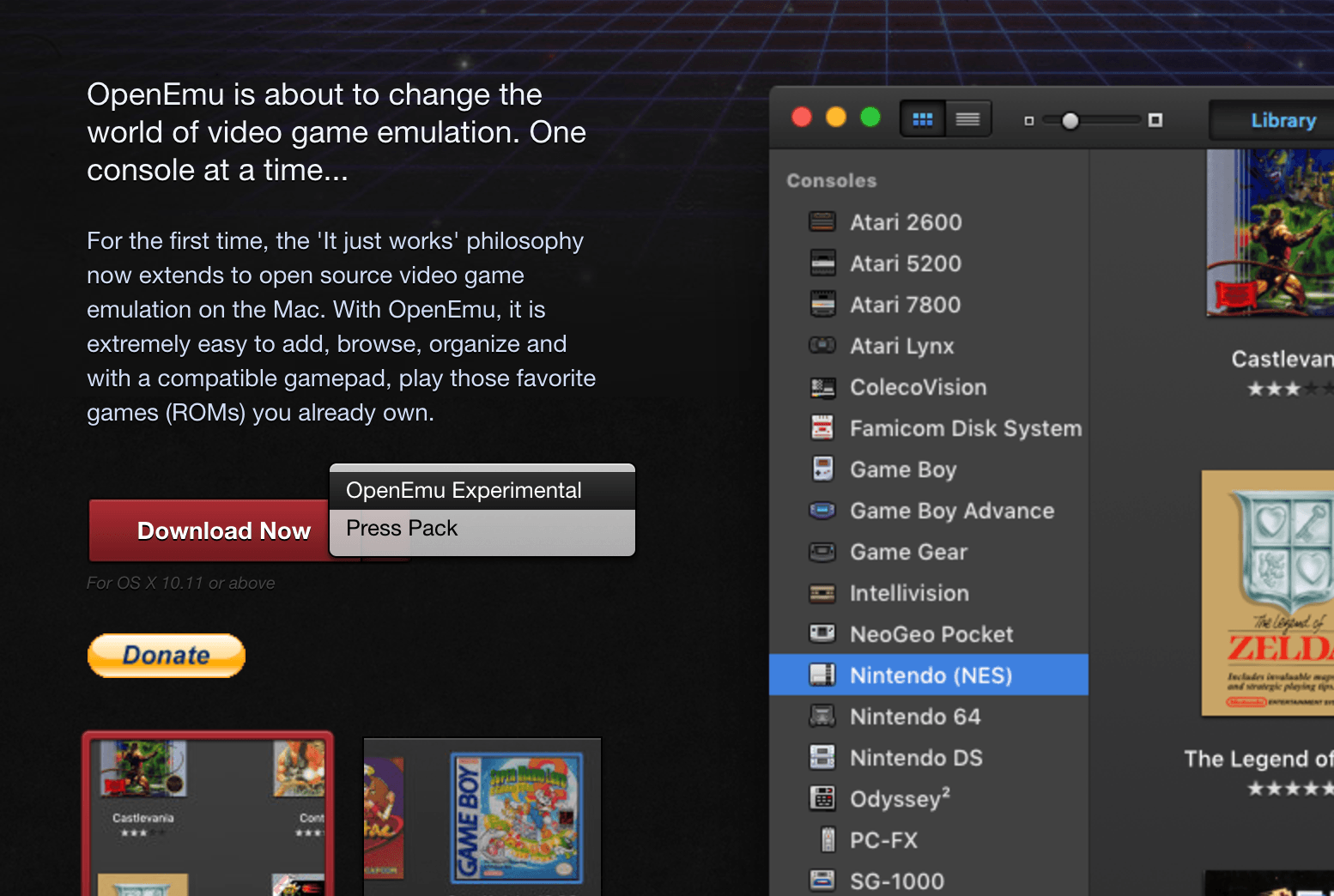

- #Mac os x rom emulator how to
- #Mac os x rom emulator for mac os
- #Mac os x rom emulator mac os x
- #Mac os x rom emulator code
- #Mac os x rom emulator series
How to control the user interface HardwareĮxtra software to be used with Mini vMac OptionsĮasily create variations with desired options Branches
#Mac os x rom emulator code
For example, a Macintosh Plus running System 7.5.5:Ĭompiled applications and source code Start Summary : The Mini vMac emulator collection allows modern computers torun software made for early Macintosh computers, the computers thatApple sold from 1984 to 1996 based upon Motorola's 680x0microprocessors.Mini vMac is part of the Gryphel Project.
#Mac os x rom emulator mac os x
#Mac os x rom emulator for mac os
The compilers for Mac OS created such UPPs automatically when the proper macros were used, and the PowerPC system libraries contained native stubs to transparently call through to native or still-68k functions as needed. The 68k emulator then dealt with details such as presenting passed parameters in the right order for the ISA in question, as well as starting and stopping the emulator as required. From PowerPC code, this UPP could be passed to the CallUniversalProc( ) function to call it. However, it actually led to a data structure which contained a special trap instruction and flags indicating the instruction set architecture (ISA) of the called code. For 68k code, this pointer appeared to be an ordinary pointer to code and could be used as such. This was achieved using a new type of pointer called a Universal Procedure Pointer (UPP). Gradually most of the OS was rewritten to be native, so the OS got faster over time.įor the programmer, the transition to the PowerPC was made fairly painless, because the emulator was started and stopped automatically.

At first, only time-critical aspects were rewritten in native code, leaving much of the OS emulated. This also allowed Apple time to port the OS to the PowerPC. In the emulator, such traps could be replaced by native PowerPC code, so the only code being emulated was the application itself, and any system API it called could be accelerated with native PowerPC code. In turn, this vector would look up and run the operating system routine from ROM or RAM. One reason that this emulation was so successful is that many of the APIs for the Mac OS were originally implemented as traps on the 680x0 processor therefore, calling an API actually was recognised by the 680x0 as the equivalent of an error condition, which would cause it to handle that error through one of its hardware vectors. The 68LC040 had no floating point instructions, making this feat slightly simpler but no less impressive. This emulator was theoretically capable of emulating 680x0 code faster than any real 680x0 was capable of running it. The emulator could recognise the same sequence of 680x0 code and run the previously-cached PowerPC code to avoid doing the translation again. Dynamic recompilation works by "recompiling" common sections of the code into faster, PowerPC-native, sequences that were locally cached.

For the PCI PowerMacs, the dynamic recompilation emulator was used to boost performance.
#Mac os x rom emulator series
Early versions emulated it by decoding each instruction and immediately carrying out a series of equivalent PowerPC instructions. Apple developer documents indicate that the emulator provided an operating environment most closely resembling that of the Macintosh Centris 610, a system based on the 68LC040 microprocessor. Prior to Traut's arrival there, Connectix had released Speed Doubler, which included its own faster PowerPC 68k emulator that also used dynamic recompilation.Īll versions of this emulator emulated the "user" subset of the Motorola 68EC040 instruction set with a 68020/68030 exception stack frame. A newer version, which used dynamic recompilation for improved performance, was developed by Eric Traut, who later worked on successful emulation projects at Connectix such as Virtual Game Station and Virtual PC. The first version was written by Gary Davidian, who had originally created it for use on the Motorola 88000 CPU, used in Apple's abortive first attempt at a RISC target platform.


 0 kommentar(er)
0 kommentar(er)
